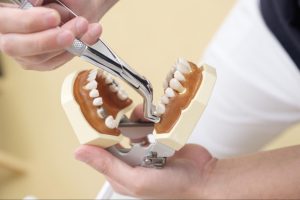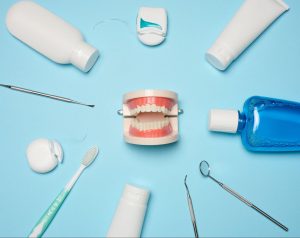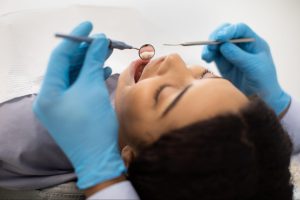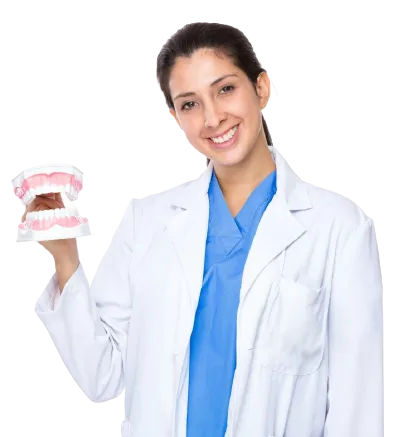Filling a cavity is one of the most common dental procedures. After this treatment, many people wonder when and what they can eat safely. Eating too soon or consuming the wrong foods may disrupt healing or even damage the filling. The type of filling material and the dentist’s specific instructions often determine your eating timeline. Understanding the nuances of post-filling eating habits can help you recover quickly and maintain your oral health.
Types of Dental Fillings and Eating Rules
Proper post-treatment care is essential after getting a dental filling. Eating habits vary depending on the type of filling and your dentist’s guidance. Each filling material has distinct properties that affect eating timelines:
Amalgam Fillings
Amalgam fillings are durable and composed of a mixture of metals. However, they take longer to harden compared to other materials. Patients should wait at least 24 hours before eating solid foods on the treated side. During this period, softer foods and liquids are recommended to prevent damage to the filling.
Composite Fillings
Composite fillings, known as white fillings, are cured with light and harden almost instantly. While you can eat shortly after the procedure, it is best to stick to soft foods for a few hours. It reduces the risk of sensitivity and ensures the filling sets ultimately. Avoid biting into hard or sticky foods immediately after getting a composite filling.
Glass Ionomer Fillings
Glass ionomer fillings are often used for smaller cavities and release fluoride to help prevent decay. They are less durable than amalgam or composite fillings and require gentle handling. Patients should avoid eating hard or chewy foods for at least 24 hours. That allows the material to be set correctly and prevents any dislodgment.
Gold and Ceramic Fillings
Gold and ceramic fillings are known for their strength and longevity. They are typically custom-made and bonded to the tooth during a second appointment. After placement, your dentist may advise waiting a few hours before eating. These fillings resist wear, but avoiding overly burdensome foods initially helps prevent discomfort and protects the bond.
Foods to Avoid After Filling Teeth
Certain foods can interfere with the healing process after a filling. Avoiding these foods ensures your filling stays intact and the treated area heals correctly:
Sticky and Hard Foods
Sticky foods, like caramel or gum, can adhere to the filling and potentially dislodge it. These foods may also put unnecessary strain on the treated tooth. Hard foods, such as nuts or raw vegetables, can cause fillings to crack or chip, especially if the material is still setting. Chewing on these items can also lead to discomfort or irritation in the surrounding gum tissue.
Hot and Cold Foods
Extreme temperatures can cause discomfort in the filled tooth. Composite fillings, in particular, may react to sudden temperature changes, leading to sensitivity. Hot foods like coffee or soup can irritate the treated tooth, while cold foods like ice cream may cause sharp, painful sensations. Avoiding extremes in temperature protects your filling and reduces sensitivity.
Best Foods to Eat After Filling Teeth
Eating the right foods after a filling helps your recovery and minimizes the risk of damaging the treated tooth. Opt for gentle, nutrient-rich options that are easy to chew and digest:
Soft Foods and Liquids
Soft foods like mashed potatoes, yogurt, or applesauce are ideal after a filling. These options reduce the need for chewing and prevent unnecessary pressure on the treated area. Liquids like smoothies or broths can provide essential nutrients without requiring chewing. These foods and drinks ensure you remain nourished while allowing the treated tooth to heal without strain.
Temperature-Neutral Foods
Choosing room-temperature foods can minimize sensitivity in the filled tooth. Warm but not hot oatmeal, scrambled eggs, or a slice of soft bread are excellent choices. These options support healing while maintaining comfort. Balanced meals that include easy-to-digest proteins, carbs, and healthy fats can aid recovery without risking the integrity of the filling.
Factors That Impact Post-Filling Eating
Several factors influence how soon and what you can eat after a filling. From the material used to the location and size of the filling, every detail matters. Considering these elements ensures proper aftercare and a speedy recovery:
Type of Filling Material
The type of filling material determines how soon you can eat. Amalgam fillings, which take longer to harden, require more cautious aftercare. Patients should wait at least 24 hours before chewing on the treated side. Composite fillings harden immediately and allow for eating sooner but still require gentle food choices. Gold and ceramic fillings, known for their strength and durability, may have varying timelines based on the dentist’s recommendations and the specific procedure.
Location and Size of the Filling
The placement and size of the filling also impact post-treatment eating. Fillings on chewing surfaces or large cavities demand more care to prevent pressure from disturbing the filling. Smaller fillings or those on non-chewing surfaces often allow for quicker eating, but it’s best to confirm with your dentist. Being mindful of biting pressure ensures the treated tooth heals properly without unnecessary strain.
Best Practices for Chewing After a Filling
Adopting safe chewing habits after a filling can protect your dental work and promote faster recovery. Follow these best practices:
Use the Opposite Side of Your Mouth
Chew on the side opposite the treated tooth to reduce pressure on the filling. For larger meals, consciously alternate sides to avoid overworking one area. This practice minimizes stress on the filling while ensuring comfort during recovery.
Cut Food Into Small Pieces
Breaking food into smaller, manageable bites minimizes the effort required for chewing and reduces the risk of damaging the filling. Soft foods like steamed vegetables or tender chicken are ideal for this stage. Smaller bites also help avoid accidentally biting down on the filling too hard.
Chew Slowly and Gently
Avoid aggressive chewing, which can stress the treated area or cause discomfort. Eating mindfully can help you detect any unusual sensations in the treated tooth. Taking time also helps avoid unintentional pressure that could crack or dislodge the filling.
Avoid Biting into Hard Foods
Skip foods like raw carrots, nuts, or hard candies immediately after a filling. Opt for softer snacks like cheese sticks or ripe fruit to satisfy cravings without damaging the filling. Gradually reintroducing more complex foods is recommended even after filling sets to protect dental work.
Monitor for Uneven Pressure
If chewing feels uneven or your bite feels off, contact your dentist. Gently bite into a piece of bread or a soft cracker to test if the bite feels natural. An uneven bite can cause long-term strain on your teeth and should be corrected promptly.
Eating Tips for Specific Dental Filling Locations
The location of the filling influences how and when you can resume eating. Fillings in different parts of the mouth face varying amounts of chewing pressure and strain. Understanding these differences can help you make safer food choices, protect your dental work, and promote a quicker recovery:
Fillings on Molars
Molars bear the brunt of chewing pressure, so extra caution is needed. Stick to soft foods for the first 24 hours, regardless of the filling material. Chew on the opposite side of the mouth to avoid putting pressure on the filled molar. Gradually reintroduce more complex foods once the filling is fully set and stable.
Premolar Fillings
Premolars are transitional teeth used for both chewing and tearing. While they experience less pressure than molars, avoid sticky or hard foods initially. Opt for soft, easy-to-chew options like scrambled eggs or mashed potatoes. Because premolars serve multiple functions, it’s essential to test chewing gently before resuming everyday eating habits.
Fillings on Front Teeth
Front-tooth fillings (incisors and canines) are less exposed to heavy chewing forces. However, avoid biting directly into hard or crunchy foods like apples or carrots. Instead, cut these foods into small pieces and chew them with the back teeth. Protecting front-tooth fillings is crucial, as they are more visible and prone to aesthetic damage.
Factors to Consider for Specific Locations
When determining how to eat after a dental filling, consider the filling’s size, location, and proximity to sensitive areas, as these can significantly impact your recovery and eating habits:
Size of the Filling
Larger fillings require more caution, as they are more susceptible to damage. A more extensive filling often means a weaker tooth structure, so extra care is essential to avoid cracks or pressure-related issues.
Biting Surfaces
Fillings on biting edges (like those on front teeth) are more prone to chipping, so avoid foods that require excessive biting force. Opt for utensils to help cut food into smaller, manageable portions to reduce strain on biting surfaces.
Proximity to Sensitive Areas
Fillings near the gum line or nerve endings may cause heightened sensitivity, requiring softer, temperature-neutral foods. Avoid spicy or acidic foods as they irritate sensitive areas and prolong discomfort during healing.
Nourish Your Recovery After Filling Teeth
Your choices about what to eat after a dental filling can impact your oral health. By selecting foods that protect and support the healing process, you’re safeguarding the filling and reinforcing a healthier eating approach. Embrace this moment as an opportunity to care for your teeth in a way that ensures they stay strong and resilient. Make every meal you enjoy a step toward recovery and a brighter, healthier smile.
Ready for a healthier smile? Check out our Meader Family Dentistry blog for more insights and advice.






